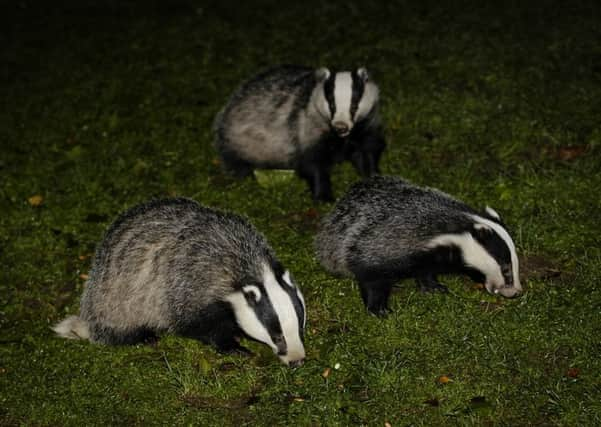Roger Cox: Pretending to be a badger isn't as mad as it sounds


Hear that? That’s the sound of all the nature writers in the land slowly scratching their heads in unison as they try to decide what to make of Charles Foster’s new book Being a Beast, published next week by Profile.
What makes Foster’s book different from all the others in this increasingly popular and increasingly crowded literary genre? Well, as he explains in his introduction, “Nature writing has generally been about humans striding colonially around, describing what they see from six feet above the ground, or about humans pretending that animals wear clothes.” In Being a Beast, Foster sets out – in all seriousness – to try living the life of the animals he’s studying, as faithfully and authentically as he can.
Advertisement
Hide AdAdvertisement
Hide AdSo, for example, rather than simply speculating about what it must be like to be a badger, he heads into the Black Mountains in Wales and spends several weeks in several different seasons living in a hole under the ground, snacking on badgery delicacies like earthworms and developing his sense of smell, to the extent that he can eventually differentiate between “the dustiness of a toad; the sharp musk of a weasel; the blunter musk of an otter”.
Speaking of otters, he has a go at living like one of those, too, in the East Lyn river, the Badgworthy Water and the other chilly waterways of Exmoor. (Thankfully he “tended to wear a wetsuit” during these periods of research, reasoning that, because neoprene traps air in a similar way to the two layers of fur an otter has, it was “more otterlike, not less, to wear one”.) He also spends time living as a fox, a red deer and a swift, although with reference to the latter, he confesses that, for him, getting airborne is “necessarily about buckles and ball-crunching harness... at best I am a huge aphid – a drifting piece of swift food.”
The trouble with the shock of the new is that sometimes it can come as a bit of a shock, and I’m ashamed to admit that among my initial reactions to this book were hostility and denial. Hostility because, on the surface at least, the whole idea seems like a great big publicity stunt. And denial? Denial because, at first, I found it hard to accept that his approach really was as much of a big deal as it was being cracked up to be. Didn’t Timothy “Grizzly Man” Treadwell already win the “let’s pretend to be an animal” game when he was accepted as an honorary grizzly bear? OK, true, he wasn’t coming at it from the same intellectual standpoint. And, yes, granted, that particular experiment didn’t end very well. But hey – surely all my favourite nature writers do this stuff already, only writing from the animals’ point of view without actually trying to live like them. A quick rifle through my bookshelves, however, tells a different story. All the nature writing I’d previously considered to be the best and most authentic is in fact anthropocentric as charged. Take Kathleen Jamie’s magical evocation of a visit to a gannetry on Shetland from her book of essays, Sightlines, in which she occasionally tries to see things from a gannet’s perspective. Even this, when placed alongside Foster’s commitment to method writing feels a little... well... speculative. Surveying the chaos of the gannet colony during mating season, Jamie asks a friend “D’you suppose there are any who just don’t bother? Any gannets who fly in and take one look at all this, and think yuk, and head straight back out to sea?” Pre-Foster, that bit made me smile; post-Foster, though, it’s undercut by an annoying little voice that says “well, if you really want to write about what gannets think, you should probably spend at least a couple of days perched uncomfortably on a noisy, guano-encrusted rock shelf half way up a sea cliff. Then you’d be able to speak with some authority on the matter.”
Of course, Jamie’s writing is no less brilliant and no less valid because of Foster’s book, but the fact that he can force a reassessment of even the best nature writing must surely mean that he’s onto something.
The most important thing to say about Being a Beast is that its live-like-the-animals premise isn’t a gimmick. There are some genuinely profound insights into what it must be like to be a badger, navigating by an olfactory map, or what it must be like to be a deer hunted by hounds (yes, he really had a friend set a bloodhound called Monty on him so he could find out what it feels like to be chased through fields and forests). Groundbreaking? Definitely. Game-changing? We’ll have to wait and see.
• Being a Beast is published on Thursday by Profile Books, £14.99